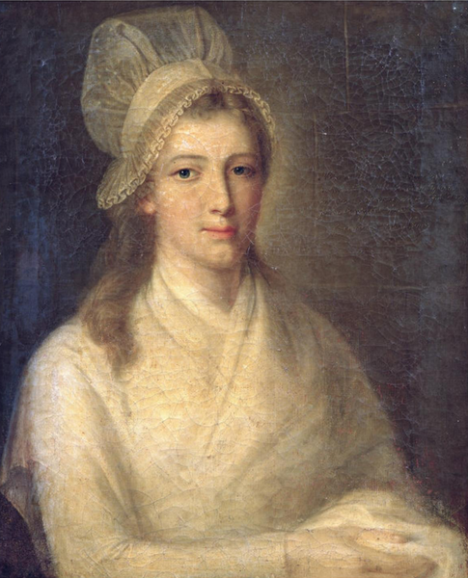Snippets of French history: Jean-Paul Marat, the French Revolution 1789-1799. Part 2.
The French Revolution in a nutshell, continued …
Although Marat (1743-1793) claimed to be a physician, he had no qualifications, and his reputation as a physician was born when he managed to cure his friend of gonorrea. He was interested in medicine and in the sciences in general and worked as an unofficial doctor in London for several years, and then in France.
He has gone down in history as a journalist, the most out-spoken and inflamatory journalist of his time, a politician who vigorously supported the Revolutuion and a fierce advocate of human rights. He was arguably the most radical voice of the French Revolution.
Marat was born in Switzerland (then part of Prussia) to a French father and an Italian mother, the second of nine children. His parents were educated people. There is no record of what they were like, nor what they looked like, but suffice to say that Marat had a vehement and undiplomatic way of speaking, and to look at he was an ugly little man! A contemporary described him as “short in stature, deformed in person, hideous in face”.
During the last few years of his life Marat suffered from a debilitating skin disease which to this day doctors have not diagnosed. It was probably some form of chronic herpes, was very painful and intolerably itchy. The only way he could ease the discomfort was to lie in the bath with his head wrapped in a wet towel. He retired from public life because of this illness and spent most of his day, and indeed most of his nights, in his bath – and was eventually murdered there.
 David, the artist, has portrayed Marat as an attractive & strong young man, but not only was he disfigured with oozing sores, he was also emaciated with none of the muscle and skin tone shown here. David was put in charge of Marat’s funeral, a very grand affair, though he (Marat) was later demoted from his eminent post-mortem status to yet another blood-thirsty revolutionary
David, the artist, has portrayed Marat as an attractive & strong young man, but not only was he disfigured with oozing sores, he was also emaciated with none of the muscle and skin tone shown here. David was put in charge of Marat’s funeral, a very grand affair, though he (Marat) was later demoted from his eminent post-mortem status to yet another blood-thirsty revolutionary
Marat’s politics were, on the face of it, the right ones: the abolition of slavery (which was eventually abolished, following Britain’s lead, almost 100 years later in 1843), equal rights in law for peasants and nobility alike, execution to be in the same form regardless of social status (like in England many years earlier, nobility was beheaded and commoners hung). He wanted to see consideration by the wealthy classes for the poorer classes – something which to us these days is obvious, but in those days it was a novel idea. (NB Throughout history the “Lord of the Manor” was expected to give to his poor workers & tenant farmers, but it was not a universally expected attitude though it was an “etiquette” that was largely followed in castle-and-peasants situations throughout Europe. Indeed, at the time of the French Revolution a great many peasants and servants supported the local Lord & Lady in the local Chateau because they had always been looked after by them. The system fell down when it came to the thousands of poor thronging the outskirts of the cities where there was no system, however unofficial, in place. Furthermore, any servants or peasant loyal to their local Chateau were murdered along with the chatelains.)
In the early stages of the sans-culottes (see separate article), Marat was a staunch supporter, but as their atrocities began, so Marat also showed signs of allowing his politics to degenerate in to mob violence. He gained a lot of heroic respect when he defeated the Girondins (representing the bourgeoisie) in the government and was serenaded as a hero through the streets of Paris. It didn’t last long. Needless to say the Girondins and the Royalists worked to regain their government strengths and yet another fraught and violent era of the revolution got out of control.
Marat was murdered as he lay in his bath. A young woman named Charlotte Corday, a Girondin, got access to him by pretending that she had important information for him (in those days bath tubs were covered by cloths and were downstairs) and she stabbed him in the chest with a kitchen knife. During her trial she said “I killed one man in order to save 100 000” … and there was a lot of truth in that. She was guillotined, aged 25, shortly afterwards.
Marat’s dying words were to his wife: Ma chere amie, aide-moi! (My dear friend, help me!)
 A more realistic (but not contemporary) depiction of the murder of Marat in that it has none of the “romance” of David’s painting, though the furious masses would not have burst in to the room like that. The bath would have been downstairs because of the problem of carrying hot water upstairs, and then emptying it all again. Note the bonnet that Charlotte is wearing … but more about that later.
A more realistic (but not contemporary) depiction of the murder of Marat in that it has none of the “romance” of David’s painting, though the furious masses would not have burst in to the room like that. The bath would have been downstairs because of the problem of carrying hot water upstairs, and then emptying it all again. Note the bonnet that Charlotte is wearing … but more about that later.
Interested in France ? Book your holiday near La Rochelle – e-mail rochebonnemangement@hotmail.co.uk. Visit www.seasidefrance.com







